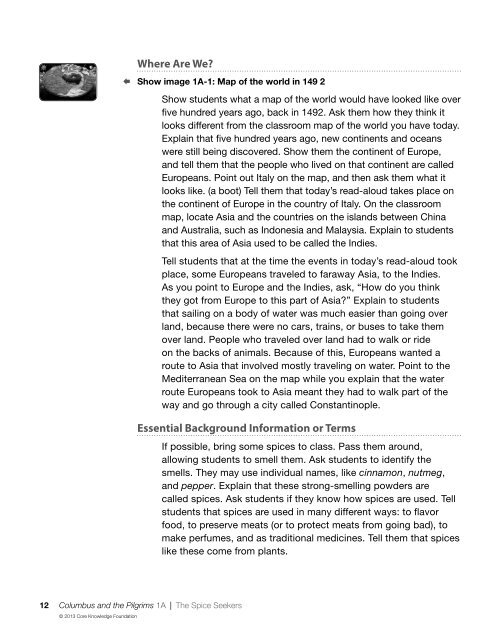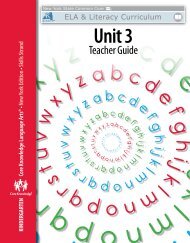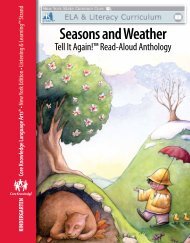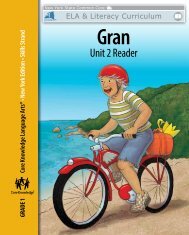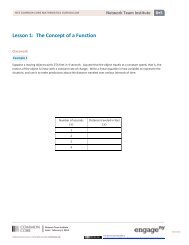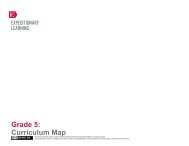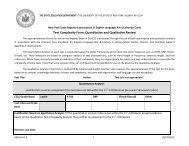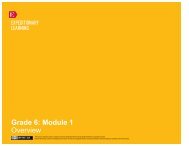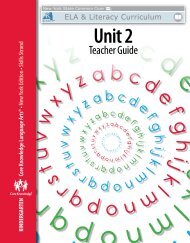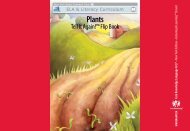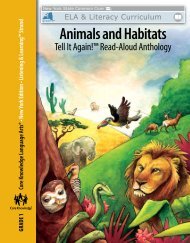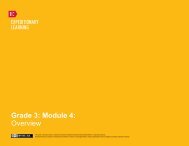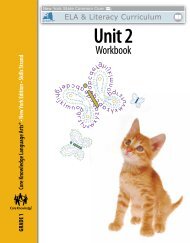Tell It Again! Read-Aloud Anthology - EngageNY
Tell It Again! Read-Aloud Anthology - EngageNY
Tell It Again! Read-Aloud Anthology - EngageNY
You also want an ePaper? Increase the reach of your titles
YUMPU automatically turns print PDFs into web optimized ePapers that Google loves.
Where Are We?<br />
Show image 1A-1: Map of the world in 149 2<br />
Show students what a map of the world would have looked like over<br />
five hundred years ago, back in 1492. Ask them how they think it<br />
looks different from the classroom map of the world you have today.<br />
Explain that five hundred years ago, new continents and oceans<br />
were still being discovered. Show them the continent of Europe,<br />
and tell them that the people who lived on that continent are called<br />
Europeans. Point out <strong>It</strong>aly on the map, and then ask them what it<br />
looks like. (a boot) <strong>Tell</strong> them that today’s read-aloud takes place on<br />
the continent of Europe in the country of <strong>It</strong>aly. On the classroom<br />
map, locate Asia and the countries on the islands between China<br />
and Australia, such as Indonesia and Malaysia. Explain to students<br />
that this area of Asia used to be called the Indies.<br />
<strong>Tell</strong> students that at the time the events in today’s read-aloud took<br />
place, some Europeans traveled to faraway Asia, to the Indies.<br />
As you point to Europe and the Indies, ask, “How do you think<br />
they got from Europe to this part of Asia?” Explain to students<br />
that sailing on a body of water was much easier than going over<br />
land, because there were no cars, trains, or buses to take them<br />
over land. People who traveled over land had to walk or ride<br />
on the backs of animals. Because of this, Europeans wanted a<br />
route to Asia that involved mostly traveling on water. Point to the<br />
Mediterranean Sea on the map while you explain that the water<br />
route Europeans took to Asia meant they had to walk part of the<br />
way and go through a city called Constantinople.<br />
Essential Background Information or Terms<br />
If possible, bring some spices to class. Pass them around,<br />
allowing students to smell them. Ask students to identify the<br />
smells. They may use individual names, like cinnamon, nutmeg,<br />
and pepper. Explain that these strong-smelling powders are<br />
called spices. Ask students if they know how spices are used. <strong>Tell</strong><br />
students that spices are used in many different ways: to flavor<br />
food, to preserve meats (or to protect meats from going bad), to<br />
make perfumes, and as traditional medicines. <strong>Tell</strong> them that spices<br />
like these come from plants.<br />
12 Columbus and the Pilgrims 1A | The Spice Seekers<br />
© 2013 Core Knowledge Foundation


